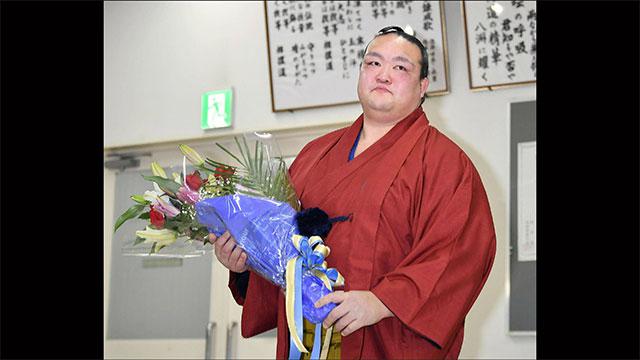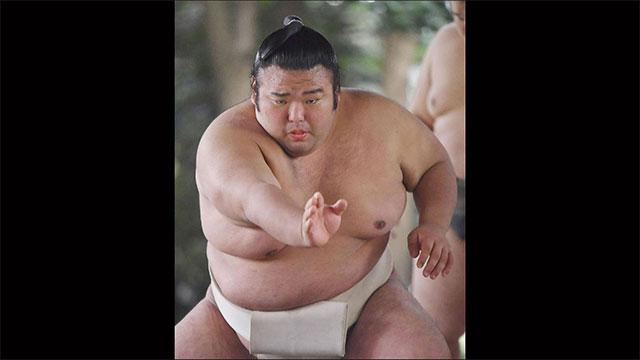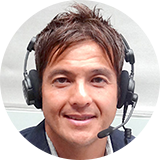KISENOSATO CALLS IT QUITS
However, after the tournament opened on January 13th, it turned into a real topsy-turvy contest.
First, Yokozuna Kisenosato got off to a rocky start, dropping his bout on the opening day. He tried to bounce back on Day 2, but once again he was upset. Then on Day 3 he was manhandled by a rank-and-filer, and people started to seriously question whether the 32-year-old still had what it takes to continue as a Yokozuna. Finally, before entering the ring on Day 4, he announced his retirement.

This might have come as a shock to people who don't follow sumo closely. But sumo journalists like yours truly pretty much saw this coming.
First of all, when you're a Yokozuna grand champion, there's only one way out when you start to decline... and that's to retire, period. If you're at a lower rank -- say you're fighting as an Ozeki champion or below -- you might be demoted but you still can carry on competing.
But once you're a Yokozuna, there's no demotion. When you can no longer compete at the highest level, the only thing you can do is retire.
Kisenosato's loss on Day 3 was his eighth consecutive defeat, including previous tournaments, making it the longest ever losing streak by a Yokozuna. But more than that, it was the way he lost his first three bouts. It must have made him realize that he just doesn't have what it takes to continue at sumo's highest rank anymore.
Kisenosato made his debut in professional sumo in 2002, and won promotion to the Yokozuna rank after clinching the 2017 New Year Tournament. In the following tournament, his first appearance at the highest rank, he won again, to seal his second career title.
However, it came at a cost -- he severely injured his pectoral muscle. But instead of sitting out the next couple of tournaments to recuperate, he returned to the ring and tried to compete. That was a bad decision, because it only aggravated the injury. He ended up pulling out or missing a record eight straight tournaments.

At the same time, while he was on the sidelines, other up-and-coming wrestlers continued to get stronger, particularly Mitakeumi, who won last July's tournament, and Takakeisho, the winner in November.
For Kisenosato's fans, the news of his retirement was devastating, because he was the first Japan-born rikishi to become Yokozuna since Takanohana retired in 2003. They really wanted to see Kisenosato lifting the Emperor's Cup many more times. But in the end, he had to retire with just two tournament titles to his name.
At his retirement news conference, he had a hard time holding back the tears as he thanked his fans for their support. He told them he really regrets that he could not live up to their expectations as a Yokozuna, but he has no regrets as a sumo wrestler. He couldn't have come this far without so many people's support, he said, and he feels full of gratitude.
Kisenosato also became tearful as he looked back over his sumo career. He recalled his former stablemaster telling him that the world looks a lot different when you become a Yokozuna. He said he did find that being a Yokozuna was totally different from being at the Ozeki level -- but he never got to appreciate the same view that his former stablemaster saw.
Personally, I've known Kisenosato for a long time and I think nobody is more disappointed than Kisenosato himself. After he was promoted to Yokozuna, he told me he wanted to compete at that rank for at least five years, if possible for ten, because it had taken him so long to get that far. He also said he wanted to win many more titles, to demonstrate that his rise to the top was no fluke.
For me, the fact that Kisenosato could compete at the highest rank for only two years is very disappointing.
He was plagued by injury from the time he became a Yokozuna, and I truly think that if he had treated his initial injury properly, he'd still be competing today -- and perhaps for many more years to come. In that sense, it's a shame that no one -- even the sumo elders -- gave Kisenosato the appropriate advice, that he should take care of his body, and not risk shortening his career.
From now on, Kisenosato will be called stablemaster Araiso. He says he's looking forward to working with young wrestlers, especially training them to become strong and avoid injury.

A TOURNAMENT RIDDLED WITH INJURIES
With Kisenosato's retirement, many people hoped that the other two Yokozuna would step up to the mark and fight like true grand champions. However, those hopes were dashed again.

Kakuryu pulled out of the contest on Day 6, after injuring his right foot. And then on Day 14, Hakuho took himself out of the tournament, saying that his right knee and his left ankle were so painful he could no longer compete. So, for the second straight tournament, all three Yokozuna were absent by the final days of the competition.
It wasn't just the Yokozuna who were plagued by injuries this time. Georgian-born Ozeki Tochinoshin had to pull out from Day 5 with an injury to his right thigh. And a couple of rank-and-filers, Kotoyuki and Chiyonokuni, were also forced out with knee injuries.
It was an injury-riddled New Year Tournament, to say the least. Needless to say, the fans are hoping that the injured wrestlers recover quickly.
COMING BACK STRONG
Another wrestler who suffered an injury this time was 26-year-old Mitakeumi, one of sumo's rising stars who won his first title last July. He hurt his left leg on Day 6 and pulled out from the following day. But to many people's surprise, he reentered the contest on Day 11. And what an impact he made -- winning three straight bouts to ensure he got a majority of wins for the tournament.

The first of those victories was over Yokozuna Hakuho, who was previously undefeated with a 10-0 record. Mitakeumi was the first man in 67 years to reenter the contest and beat a Yokozuna on his first day back in action. He also became the first man in 35 years to defeat all three Yokozuna when wrestling at the rank of Sekiwake or below. Mitakeumi didn't win the title, but managed to finish with a record of 8 wins against 4 losses and 3 absences. He was rewarded by the sumo elders for his resilience with the tournament's Outstanding Performance Award.
IMPERIAL COUPLE WATCHES GRAND SUMO

On Day 8, Japan's Emperor and Empress watched the New Year Grand Sumo Tournament. Their attendance at the event marks their last... before Emperor Akihito's abdication in April.
The Imperial couple enjoyed the day's last nine bouts contested by wrestlers in the top division. They applauded Yokozuna Hakuho when he beat his opponent with a pulling underarm throw.
The Chairman of the Japan Sumo Association later said that the Emperor told him that he enjoyed the bouts.
And, the Empress expressed her concern for wrestlers who are staying out of the tournament due to injuries.
The couple first visited the arena in 1990. It was the couple's 23rd visit to the arena this time. When the Emperor and Empress appeared, spectators responded with thunderous applause.
A DREAM COMES TRUE
Finally, the million-dollar question: at the end of the New Year Tournament, who hoisted the Emperor's Cup?
Well, no scriptwriter could have made the race for the title any more unpredictable than it was. Entering the final day, the sole leader was Tamawashi, fighting at the third highest rank of Sekiwake. Yes, that's right, Tamawashi -- the 34-year-old veteran from Mongolia!
After 14 days he had 12 wins against 2 losses, and he went into his final bout with the chance of clinching his first ever tournament title. His opponent was Endo, one of Japan's home-grown hopefuls. Endo attacked Tamawashi with a strong initial charge but Tamawashi held his ground and buried Endo by a thrust-down, to clinch the bout -- and his first Emperor's Cup.

Tamawashi made his pro debut in the 2004 New Year Tournament, so it took him exactly 15 years to realize his dream. He has never missed even a single day of action since his debut, and his consecutive appearance streak now stands at 1,151. That's an amazing accomplishment in itself when you have a bunch of wrestlers not participating or withdrawing from a competition with all sorts of injuries these days.
Tamawashi is the 7th man from Mongolia to win the top division title followed by Asashoryu, Hakuho, Harumafuji, Kyokutenho, Kakuryu and Terunofuji. Furthermore, winning the Emperor's Cup for the first time at the age of 34 years and 2 months makes him the second eldest wrestler to do so. The eldest rikishi to win his first title was Kyokutenho who's also from Mongolia. He won it in the 2012 May tournament when he was 37 years and 8 months old.
Interviewed after his victory, Tamawashi said he felt so nervous ahead of his bout -- but he rose to the occasion. He also said this tournament seemed to last forever, but he stayed focused and he's just happy with the outcome.
Tamawashi's living room will be filled with some hardware as a reward for his magnificent accomplishment in the New Year Tournament. For his splendid performance and fighting spirit, he was given the Outstanding Performance Award and the Fighting Spirit Prize in addition to the biggest prize he won, the Emperor's Cup.

For Tamawashi, this title couldn't have come at a better time. His parents rarely visit Tokyo, but they happened to be in town to witness their son's amazing accomplishment. Also, his second child was born on the morning of the same day he won his first top division title. Any way you look at it, Tamawashi is off to a very auspicious start in 2019.
Tamawashi always told me he really wanted to win a title, because everybody has a chance to accomplish that. And he finally did it in this year's New Year Tournament. Big congratulations Tamawashi!
SLIPPING OUT OF HIS HANDS AT THE LAST MINUTE

22-year-old Sekiwake Takakeisho was in with a chance of winning back to back titles, but he just came up short. After 14 days, he had an impressive 11-3 record and was also still in with a chance of a promotion to Ozeki, the second-highest rank -- just as long as he could beat Ozeki Goeido in his final bout.
So what happened? He got smoked by Goeido and that meant that his hopes of promotion went out the window.
As a consolation, Takakeisho was awarded the Technique Prize for staying in the title race until the last day by manhandling his foes with his fierce thrusting attacks. But it's common knowledge that he's not at all happy with the way the tournament ended for him.
One positive thing for Takakeisho is that he'll get another shot at promotion in the next tournament. I'm sure he already has his sights set on getting the job done and reaching the Ozeki rank next time. The 15-day Spring Tournament will be held in Osaka, starting March 10th.

